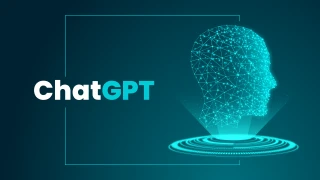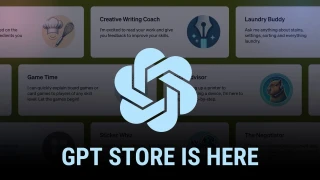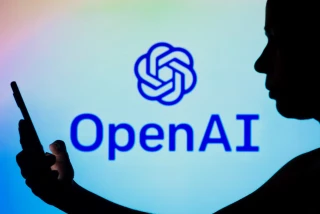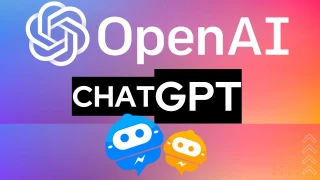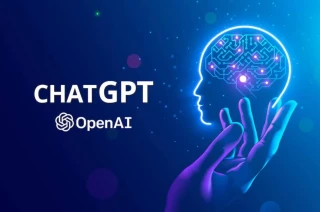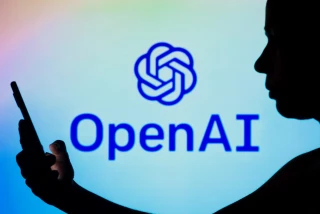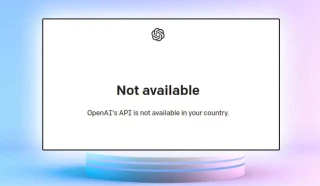
How to Create Prompts for ChatGPT?
Although the language model from OpenAI communicates with users in almost natural language, the service itself does not always correctly understand people. Because of this, you can get answers that are not quite what you expect. To get the maximum result from the neural network (with a minimum number of errors of any quality), it is necessary to ask the right questions. Or in other words - prompts for Chat GPT.
These are a kind of technical specifications. This term is more common and familiar to everyone who is involved in providing description services. And in order for the result to match the description (i.e. expectations) as much as possible, it is necessary to compose the specifications (and in our case - prompts for ChatGPT 4) according to certain rules. More on this below.
By the way, on the Grizzly SMS SMS activator site, you will find reliable virtual numbers for receiving messages from Chat GPT and OpenAI. Inexpensive, anonymous and with guaranteed message delivery. Give it a try!
Prompts for the ChatGPT Neural Network: How Does It Work?
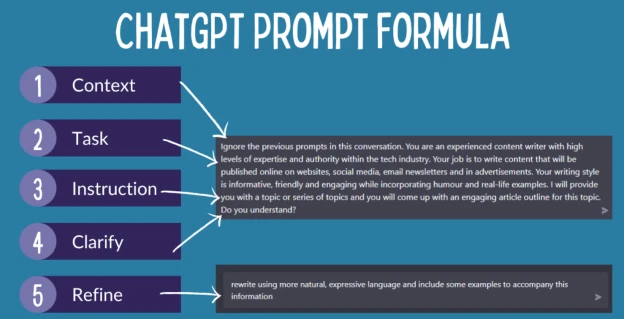
Before moving on to writing strategies and making your ChatGPT 4 prompt, it is important to understand how ChatGPT works with them. ChatGPT is a language model that uses a large dataset to generate text based on the data provided. When receiving a certain task or question, ChatGPT uses its training data to create a response that matches the input data. The quality of ChatGPT's performance largely depends on the quality of the data provided. This is where the art of writing prompts comes in. With high-quality prompts, ChatGPT will generate more accurate and relevant responses.
Another point: prompts for ChatGPT text must meet certain standards. Quality prompts are important for several reasons. First, as already mentioned, they help ChatGPT generate more accurate and relevant responses. Second, they increase the efficiency of human-bot interaction, minimizing the need for additional clarification and corrections. Third, they improve the overall user experience by providing engaging and thought-provoking content.
The Right Prompt for ChatGPT: An Engagement Strategy

Strategies for creating engaging prompts. Engaging prompts for ChatGPT for articles are those that help attract the reader's attention and encourage them to continue reading. Here are several strategies that will help create them:
- Using open-ended questions. Open-ended questions are those that cannot be answered with a simple "yes" or "no." Such questions encourage the reader to think deeply and immerse themselves in the content. For example, instead of "What pizza should I make?" ask: "What toppings exist for pizza?"
- Personalization and storytelling. These are effective ways to attract the reader's attention. By referring to the reader's life experiences and observations, you can make your question more understandable and engaging. For example, instead of "What is your favorite book?" ask: "What book has had the greatest impact on your life and why?"
- Before writing prompts for ChatGPT, think about using analogies and metaphors. Analogies and metaphors are powerful tools that engage the reader and help them grasp complex concepts. By comparing an unfamiliar concept to something more familiar, you'll allow the reader to make associative connections and become engrossed in the content. For example, instead of "What is artificial intelligence?", pose the question like this: "What if machines could think like humans?"
- Using rhetorical questions. Rhetorical questions are those that do not require an answer but are used to convey an idea or draw attention to a topic. They effectively engage readers by provoking a sense of curiosity or challenging their assumptions. For example, instead of "What is the meaning of life?", it's better to ask: "Is it possible to have a single and final definition of the meaning of life?".
How to Write a Prompt for ChatGPT: Encouraging the Neural Network to Reflect

Prompts of this type question the reader's assumptions or motivate them to critically analyze the topic. Below, we will look at several strategies for creating such prompts. Examples of prompts for ChatGPT are based on the following reasoning:
- Using controversial and provocative statements. This can attract readers' attention and encourage them to analyze the topic, but it is important to use such statements cautiously to avoid a negative reaction. For example, instead of the simple question "Are you for the death penalty?", you could ask: "Is the death penalty a fair and effective form of punishment?".
- Including current events and news stories. This is an effective way to engage readers and encourage them to analyze real issues. For example, instead of the question "What is climate change?", you could ask: "How can society and governments work together to solve the problem of climate change?".
- Using historical examples and quotes. This helps illustrate complex concepts or provide context for the topic. It can also be used to provoke doubt or present a new perspective. For example, instead of the simple question "What is democracy?", you could ask: "As Winston Churchill said, 'Democracy is the worst form of government, except for all the others.' What does this mean and do you agree with it?".
A combination of these strategies can help create even more powerful prompts for Chat GPT. For example, you could combine the strategies of personalization and using analogies: "How do you think you would feel if your childhood could be re-experienced in virtual reality?".
Best Prompts for ChatGPT: Additional Tips

Applying the tips listed below in practice will allow you to achieve good results with a minimum number of requests to artificial intelligence:
- Express your thoughts clearly and concisely;
- When creating prompts for ChatGPT, avoid using special terms that may be unfamiliar to the reader;
- Adapt prompts to the knowledge level of the target audience;
- Use active verb forms instead of passive constructions;
- Check and revise your prompts to ensure they are engaging, relevant, and capable of sparking interest and reflection;
Writing quality prompts for Chat GPT is a skill that takes time and practice. By following these strategies and tips, you will be able to create prompts that will help the neural network generate accurate and relevant responses, engage the audience, and encourage deep reflection.





















































































































































































































